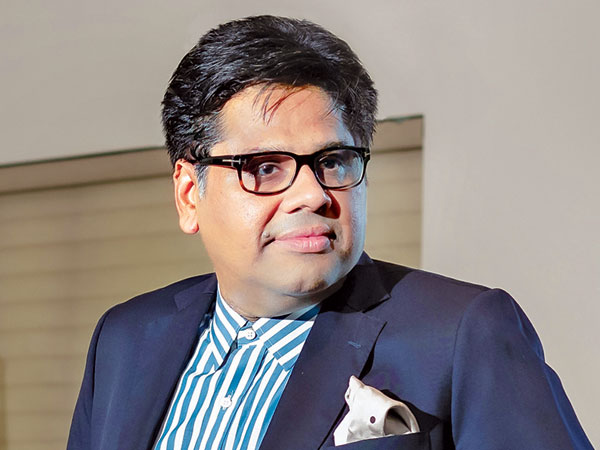Advanced alloys boost green building and renewable energy programs.
Brij Bhushan Agarwal, Vice Chairman & MD, Shyam Metalics & Energy How do you view India's infrastructure development trends over the years? Over the years, India's infrastructure landscape has undergone remarkable transformations. Economic reforms in the 1990s led to international investments in pivotal projects like highways and telecom, initially focusing on basic connectivity and services.

Brij Bhushan Agarwal, Vice Chairman & MD, Shyam Metalics & Energy
How do you view India's infrastructure development trends over the years?
Over the years, India's infrastructure landscape has undergone remarkable transformations. Economic reforms in the 1990s led to international investments in pivotal projects like highways and telecom, initially focusing on basic connectivity and services. The 2000s were marked by urbanization and modernization efforts, exemplified by initiatives like the Delhi Metro and the expansion of renewable energy sources. Transitioning into the 2010s, the "Digital India" campaign and a prominent role in renewable energy propelled the nation toward digitalization. Despite persistent challenges like funding gaps and disparities, urban mobility, sustainability, and smart cities gained prominence. As India looks ahead, there's a clear commitment to fostering technologically advanced, inclusive, and sustainable infrastructure for the future.
How is the role of metals changing in India's construction and infrastructure development?
Metals are replacing traditional structural elements as adaptable and sustainable building materials in India's infrastructure development. Beyond providing strength, metals are now used for their unique properties, contributing to energy efficiency, innovative designs, and environmentally conscious projects. Advanced alloys boost green building and renewable energy programs, while lightweight metals like aluminium help with cladding and reduce energy consumption. Metals are developing to play a more dynamic and comprehensive function in forming contemporary infrastructure as India focuses on urbanization and sustainable growth.

How is the company contributing to the needs of metals and other building materials for the infrastructure creation of the country?
The company is proactively addressing the nation's infrastructure demands through the provision of vital metals and building materials. By ensuring a steady supply of state-of-the-art materials, such as steel, the company actively fosters the growth of essential infrastructure. This contribution plays a pivotal role in meeting the needs of construction, bridges, energy projects, and urban development, consequently driving significant progress for the entire country.
What opportunities do you anticipate for your products and solutions in the coming years and how are you prepared for future demand?
In the years ahead, our company anticipates substantial opportunities for our products and solutions, propelled by India's escalating infrastructure requirements. As urbanization accelerates and initiatives in renewable energy and smart city development gain momentum, the significance of our materials becomes even more distinct. Through dedicated investments in research and development, we have curated an array of advanced, sustainable, and high-efficiency solutions. This unwavering commitment to innovation, uncompromising quality, and unwavering environmental stewardship positions us firmly to not only fulfill but also exceed the forthcoming demand.

How do you envision India's infrastructure development?
Envisioning India's infrastructure development in 2030 reveals a landscape of transformative possibilities. A potential vision entails a multi-faceted approach that encompasses various dimensions of progress:
Sustainable and inclusive growth: India's infrastructure would be designed to foster economic growth that's balanced with environmental preservation and social inclusivity. Projects and policies would prioritize sustainable development, minimizing adverse environmental impacts and ensuring equitable access for all segments of society.
Technologically advanced Smart Cities: The vision includes the evolution of technologically advanced smart cities that leverage data and digital connectivity to enhance urban living. These cities would incorporate smart transportation systems, efficient energy management, and integrated digital services, improving the quality of life for residents.
Renewable energy leadership: India's infrastructure landscape would reflect a leadership position in renewable energy adoption. Investments in solar, wind, and other clean energy sources would be integrated into the energy grid, driving reduced reliance on fossil fuels and contributing to global climate goals.
Resilient infrastructure: Anticipating future challenges such as climate change and natural disasters, infrastructure would be designed with resilience in mind. Robust construction practices, disaster preparedness plans, and adaptive infrastructure would ensure the country's ability to withstand shocks.
Skilled workforce: A skilled workforce would be nurtured through investments in education and training. As infrastructure sectors expand, a well-trained workforce would be available to manage, operate, and maintain various projects, driving economic growth.
However, it's important to note that the actual realization of this vision will be influenced by a range of factors, including government policies, economic conditions, technological advancements, and evolving societal needs. Flexibility and adaptability will be key as India navigates the dynamic landscape of infrastructure development in the years leading up to 2030.
Hits: 3









